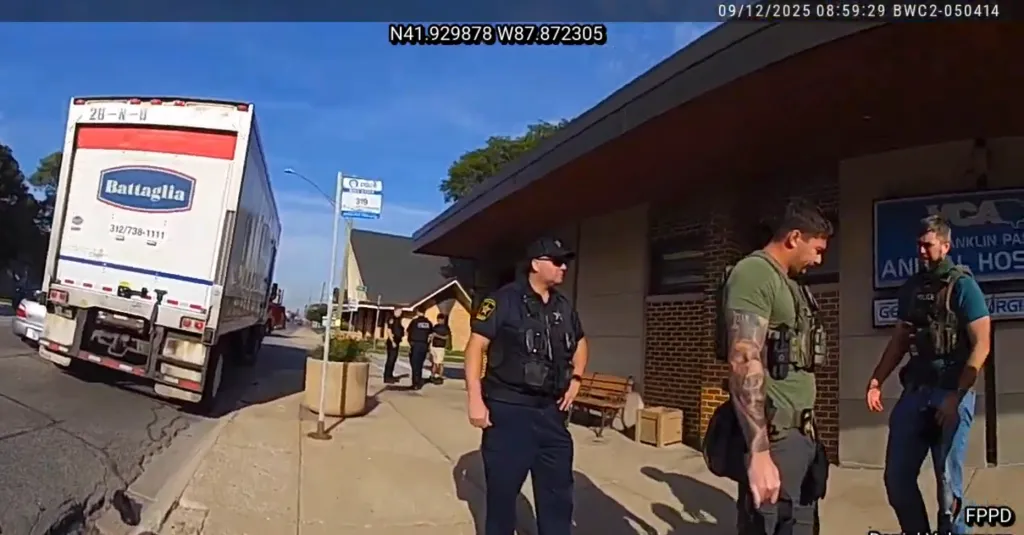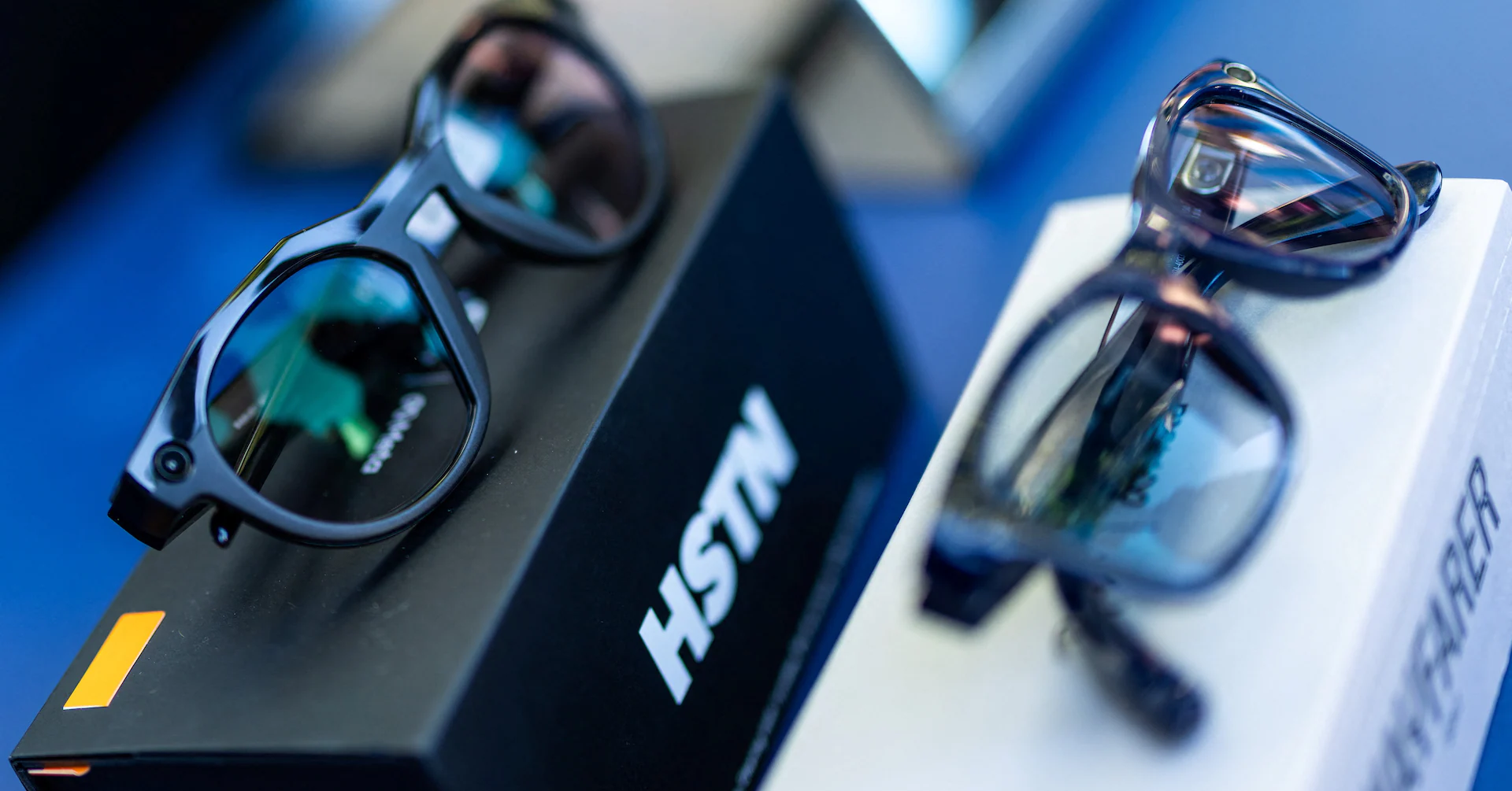
An ICE agent who fatally shot an undocumented immigrant after allegedly being dragged by his fleeing vehicle earlier this month told told Franklin Park Police at the scene that his injuries were “nothing major,” according to body-worn camera footage released to the Tribune on Tuesday
In a statement released shortly after the shooting, DHS officials said Silvero Villegas-Gonzalez “refused to follow law enforcement commands and drove his car” at officers trying to conduct a traffic stop, striking one of the ICE agents and dragging him “a significant distance.”
The statement said that one of the officers fired at 38-year-old Villegas-Gonzalez, whom officials said was a Mexican national in the U.S. without authorization, “fearing for his life.”
The officer was initially in critical condition following the traffic stop, DHS officials said. But when a Franklin Park police officer asked the agents if they were okay, one federal officer appeared to give a double thumbs-up in response. Both agents deemed the bloodied knee and cut-up hands on the officer apparently dragged to be “nothing major.”
Later, a Franklin Park police officer describing one of the agent’s injuries said he had a “left knee injury, some lacerations to his hands.”
The injured agent is shown on body-worn camera footage looking at his hands and shaking his head. One of the legs of his jeans are ripped open, showing a bloody knee.
Though it only shows the aftermath, the body-worn camera footage from Franklin Park police offers one of the only glimpses into the shooting, given that the ICE agents involved in the shooting were not wearing body cameras. Video from a nearby nail salon also captured part of the shooting, but not the whole picture. The footage also captures confusion among Franklin Park officials about which agency would investigate the shooting — a question that’s still open almost two weeks later.
According to the footage, officers first found the pair of agents bent over Villegas-Gonzalez and apparently doing chest compressions, near the intersection of Grand Avenue and Elder Street around 8:56 a.m.
“He tried to run us over,” one agent says.
“Are you guys good?” the officer asks.
“Uh-huh,” an agent says, nodding. He appears to give two thumbs up.
Several other officials came over to talk to the agents while paramedics took Villegas Gonzalez to an ambulance.
DHS officials said in a statement Friday that the agent who shot Villegas had worked for ICE since 2021 and that this was his first time firing his weapon in a use of force incident. The agency didn’t immediately respond to a request for comment on the body-worn camera footage.
A man who was driving a truck that Villegas Gonzalez hit within moments of the shooting told police that the agents pulled Villegas Gonzalez over and cut him off.
“The two officers got out, ran to his car, tried to pull him out,” the man said. “He backed up. I was already pulling to the side. He crashed into (my truck). He was trying to escape from them.”
The driver wasn’t sure when Villegas Gonzalez hit his truck, but told police he heard at least one shot. An autopsy by the Cook County medical examiner’s office later ruled that Villegas-Gonzalez died as a result of multiple gunshot wounds.
The killing sparked immediate protests around the Chicago area as citizens, politicians and advocates condemned the Trump administration’s crackdown on undocumented immigrants, now in a second wave in the Chicago area which officials have dubbed “Operation Midway Blitz.”
Mexican President Claudia Sheinbaum has called for a full investigation into the shooting, echoing demands from local officials like Gov. J.B. Pritzker and members of the Illinois Congressional delegation.
The body-worn camera footage captures a conversation between Franklin Park Police Director Michael Witz and officer Thomas Ferris about whether Illinois State Police or Franklin Park would investigate the shooting.
“It’s their guys who shot,” Witz says. “You know what I’m saying?”
“Public Integrity?” Ferris asks.
“It’s their guys. It’s not our guys.”
Although officials with the FBI were seen at the site of the shooting and Franklin Park officials have said the agency is conducting a follow-up probe, the agency has since refused to confirm or deny its level of involvement in the investigation.
Experts familiar with federal body camera policies and practices – especially now under the Trump administration – were not optimistic that the public will get a full accounting of the shooting.
Most federal agencies are not broadly using body-worn cameras, which sets them apart from many local agencies that have embraced the technology in recent years.
Cameron McEllhiney, executive director of the National Association for Civilian Oversight of Law Enforcement, said last week she was not hopeful that the public will get a robust accounting of the shooting in Franklin Park, given that there is no body-worn footage and no mandates for information to be released.
“For the most part, there has never been the type of civilian oversight that we see at the local level,” McEllhiney said of federal law enforcement agencies.
Though a May 2022 executive order signed by then-President Joe Biden mandated that federal agencies update or create policies around use of body-worn cameras, among other policing reforms, President Donald Trump rescinded the order upon taking office.
Since then, some federal agencies have quietly stopped body cameras. ProPublica reported in May that the Drug Enforcement Administration shuttered its program. Citing multiple sources, NewsNation reported earlier this year that Border Patrol agents stopped wearing cameras.
Even during the Biden administration, ICE acknowledged in a news release that it did not have the resources “to (issue) cameras to all ICE law enforcement personnel.”
McEllhiney noted that body-worn cameras, when used, can offer a nearly complete picture of a shooting, as it generally includes the perspective of the officer involved as well as other responding officers. Use of such cameras can protect law enforcement themselves, as well as the community, she said.
“I do think that sometimes people have a misperception that oversight is anti-law enforcement when in reality … oversight works to provide better policing for communities which benefits police and the people they serve,” she said.
By contrast, in the city of Chicago, policy dictates that footage from CPD body-worn cameras and related police records are published within 60 days of a police shooting.
According to DHS reports, ICE agents recorded 78 instances of use of force during the 2023 fiscal year, including two fatalities. In 2022, the agency recorded 55 incidents, four of them fatal.
A policy memo dated February of 2023, DHS defines justifiable use of force as when “no reasonably effective, safe and feasible alternative appears to exist.” The 13-page policy memo further says that agents may only use a level of force that is “objectively reasonable” in light of the specific facts on the ground.
In particular, the policy notes that DHS agents cannot shoot at the driver of a moving vehicle unless such a use of force would be justified under the overall policy.
It also says that agents must not shoot at moving vehicles as a warning or to disable the vehicle, except in some limited circumstances such as in certain maritime or aviation scenarios.



